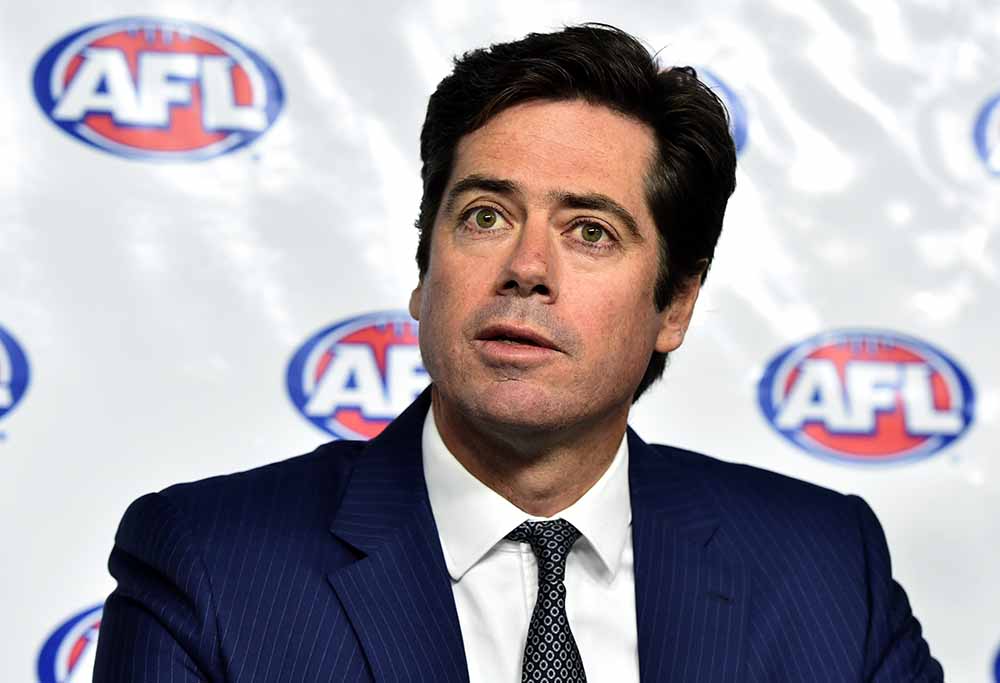The reason the bye was introduced last year was to protect the integrity of the game after the fiasco of Round 23 in 2015 when Fremantle and North Melbourne rested 11 and nine players respectively on the eve of the finals.
This was a year after the AFL revised Rule 29 – ‘Performing on One’s Merits’ in October 2013, after Fremantle rested seven of its star players for the Round 23 match against St Kilda.
Fremantle were third on the ladder at the time (St Kilda 16th spot) and unlikely to improve their position as Geelong were second on the ladder and playing the Brisbane Lions (12th spot), whom they defeated by a single point.
The revised Rule 29 states that teams must “perform honestly and to the best of one’s ability” but also states a legitimate competitive objective can include “management of player fatigue”.
The AFL stated that if teams were playing finals they have the right to consider matches ahead when picking a team but that they are not allowed to rest players in order to improve their draft or trade position, or to manipulate their position on the ladder to improve their finals draw.
The debate surrounding the Round 23 2015 fiasco raged in the media around the integrity of the game with comments such as “What a joke, a bloody disgrace” to “Un-Australian – I don’t like it – Australians don’t do that”.
The central argument against the mass resting of players in the final round of the home-and-away season was with respect to the potential consequence of impacting the final ladder position of teams in the final eight.
Both Fremantle and North Melbourne received approval from the AFL in 2015 to rest their players under AFL Rule 29, despite AFL Chief Executive Gillon McLachlan stating he didn’t like the mass restings but, that it was almost impossible to craft a rule to stop them, other than a change to the fixtures to prevent a repeat.
And indeed a change to the fixtures was introduced last year in the form of a bye in the week before the finals.

(AAP Image/Julian Smith)
But, does the bye serve its purpose?
What’s to stop a club from resting their players en masse regardless?
It was interesting to read in the media before Round 23 that Don Pyke was questioned as to whether or not he would be resting players, given Adelaide had locked in a top two spot on the ladder and a home game in the first week of the finals.
So it seems there is still the potential for clubs in the top eight to rest players in the final round ahead of the finals, at least in the opinion of the media there is.
As it turned out, the Crows did have both Taylor Walker and Daniel Talia miss the game as late outs, and the Eagles narrowly snuck into finals thanks to a bizarre confluence of circumstances.
Alastair Clarkson believes that the pre-finals bye has hurt the integrity of the competition and went one step further during a recent presser stating that top four sides are at a disadvantage if they win their opening qualifying final.
“I think it’s an enormous disadvantage finishing top four and winning your first final and playing one game in three weeks leading into a prelim. It’s unbelievably challenging for a top four team, given they have deserved top four status. That’s why anyone in the top eight could win it.
I don’t think it’s good for the game. Part of the game is survival of the fittest, and if you’ve worked hard to deserve top four status you shouldn’t be disadvantaged come the finals.”

(Image: AAP Image/Joe Castro)
For the sake of accuracy, the bye before the finals means that those teams in the top four that win their qualifying final will play only one match over a four week period, not a three week period as stated by Clarkson, before fronting up again in a preliminary final.
Clarkson’s argument ties in neatly with Pyke’s belief that continuity is more important than resting players on the eve of the finals and is supported by the results of the two preliminary finals last year.
Both Geelong and GWS finished in the top four last year and both won their qualifying finals but lost their respective preliminary finals two weeks later.
Geelong was blown off the park by Sydney and the game was all but over at quarter time after Sydney booted seven goals to zip.
Clarkson actually went further during his presser suggesting that clubs could stop aiming for the top four if this year’s premier came from outside the top four, which was the case with the Bulldogs last year when they barnstormed their way to a premiership with four straight wins over West Coasr (at Subiaco), Hawthorn, GWS (at Spotless) and Sydney. A pretty daunting task at the best of times.
The solution to this potential problem (according to Blind Freddie) is to split Round 23 over two weeks, with 5 and 4 games played in each week respectively.
The teams in the top four would be drawn to play in the second week of the split round, therefore reducing the number of weeks those teams that win their qualifying final, before fronting up again in a preliminary final, from four weeks to three weeks.
Some people might argue that this would cause a logistical problem with respect to flights and accommodation for sides drawn to travel interstate in the final round of the home-and-away season in not knowing whether they would be playing in the first or second week of the final round.
A simple solution to that is to fix the draw so that all interstate teams don’t have to travel in the final round.
That would mean the final round is composed of four interstate derbies, and the ten Victorian teams playing each other also.
Problem fixed says Blind Freddie.
But what if some or all of the teams in the top four are drawn to play each other in the final round?
Again, there is a simple solution according to Blind Freddie, the four games in the second week of the final round split round are the top foru home games rather than top four sides.
So if there are only two sides in the top four drawn to play each other in the final round before the finals, then the fourth game would be the game the team in fifth spot on the ladder is drawn to play.
If there are four sides in the top four drawn to play each other, then the third and fourth games would be the games the teams in fifth and sixth spot on the ladder are drawn to play.
And if the team in fifth spot on the ladder is drawn to play the team in sixth spot on the ladder, then the fourth game would be the game the team in seventh spot on the ladder is drawn to play.
Problem solved, says Blind Freddie.
And what’s more, says Blind Freddie, is that the football following public wouldn’t have to suffer a whole week without a footy match before the finals.































































































